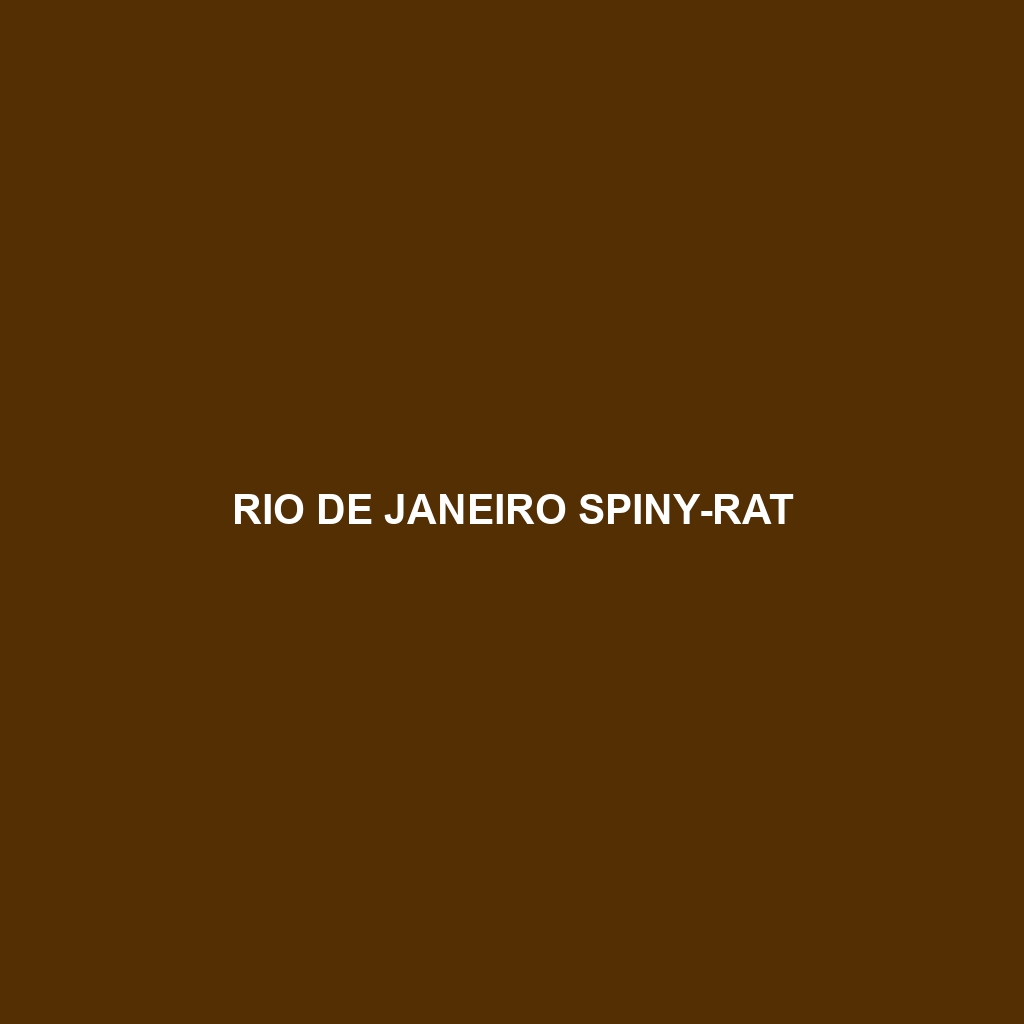Rio de Janeiro Spiny-rat
Common Name: Rio de Janeiro Spiny-rat
Scientific Name: Proechimys roberti
Habitat
The Rio de Janeiro Spiny-rat is primarily found in the lush Atlantic Forest of Brazil, specifically in the state of Rio de Janeiro. This species thrives in tropical rainforests, where it inhabits areas with dense vegetation, rich undergrowth, and a humid climate. The combination of heat and high annual rainfall creates an ideal environment for the Rio de Janeiro Spiny-rat, contributing to its survival and abundance in this region.
Physical Characteristics
The Rio de Janeiro Spiny-rat is a medium-sized rodent, typically measuring between 20 to 30 cm in body length, with an additional tail length of 15 to 25 cm. Its fur is characterized by a unique combination of colors, ranging from dark brown to tan, with lighter underparts. Distinctive spiny hairs set this species apart from other rodents. The rat has a robust body shape, prominent ears, and a short, stocky build, making it well-adapted for navigating its forest environment.
Behavior
Known for its nocturnal habits, the Rio de Janeiro Spiny-rat is primarily active at night. It exhibits a range of behaviors, including foraging, climbing, and burrowing. They are social creatures, often found in small family groups, which aids in vigilance against predators. Their ability to communicate through vocalizations and scent markings enhances their social structure.
Diet
The diet of the Rio de Janeiro Spiny-rat primarily consists of fruits, seeds, and vegetation, with a particular preference for more fleshy fruits found in its forest habitat. These rodents play an essential role in seed dispersal, thereby contributing significantly to the regeneration of their ecosystem. Their feeding habits are crucial for maintaining the biodiversity of the Atlantic Forest.
Reproduction
Reproductive activities of the Rio de Janeiro Spiny-rat peak during the rainy season, which provides ample food resources for gestation and nurturing offspring. Females typically give birth to one or two pups after a gestation period of approximately six weeks. Maternal care is strong; mothers actively protect and feed their young until they are independent enough to forage on their own.
Conservation Status
The Rio de Janeiro Spiny-rat is currently classified as vulnerable according to the IUCN Red List. Habitat loss due to deforestation, urbanization, and agricultural expansion poses significant threats to its survival. Conservation efforts are vital to protect the remaining populations and their habitats from further decline.
Interesting Facts
A fascinating fact about the Rio de Janeiro Spiny-rat is its ability to cuddle together for heat during cooler nights, showcasing their social nature. Additionally, their spiny fur is believed to provide protection from predators, making them less palatable and offering a unique defense mechanism.
Role in Ecosystem
The Rio de Janeiro Spiny-rat plays a critical role in its ecosystem as a seed disperser. By consuming various fruits and seeds, it aids in plant propagation and contributes to the health of the Atlantic Forest. Its presence signifies a healthy environment, supporting the intricate web of life within its habitat.
